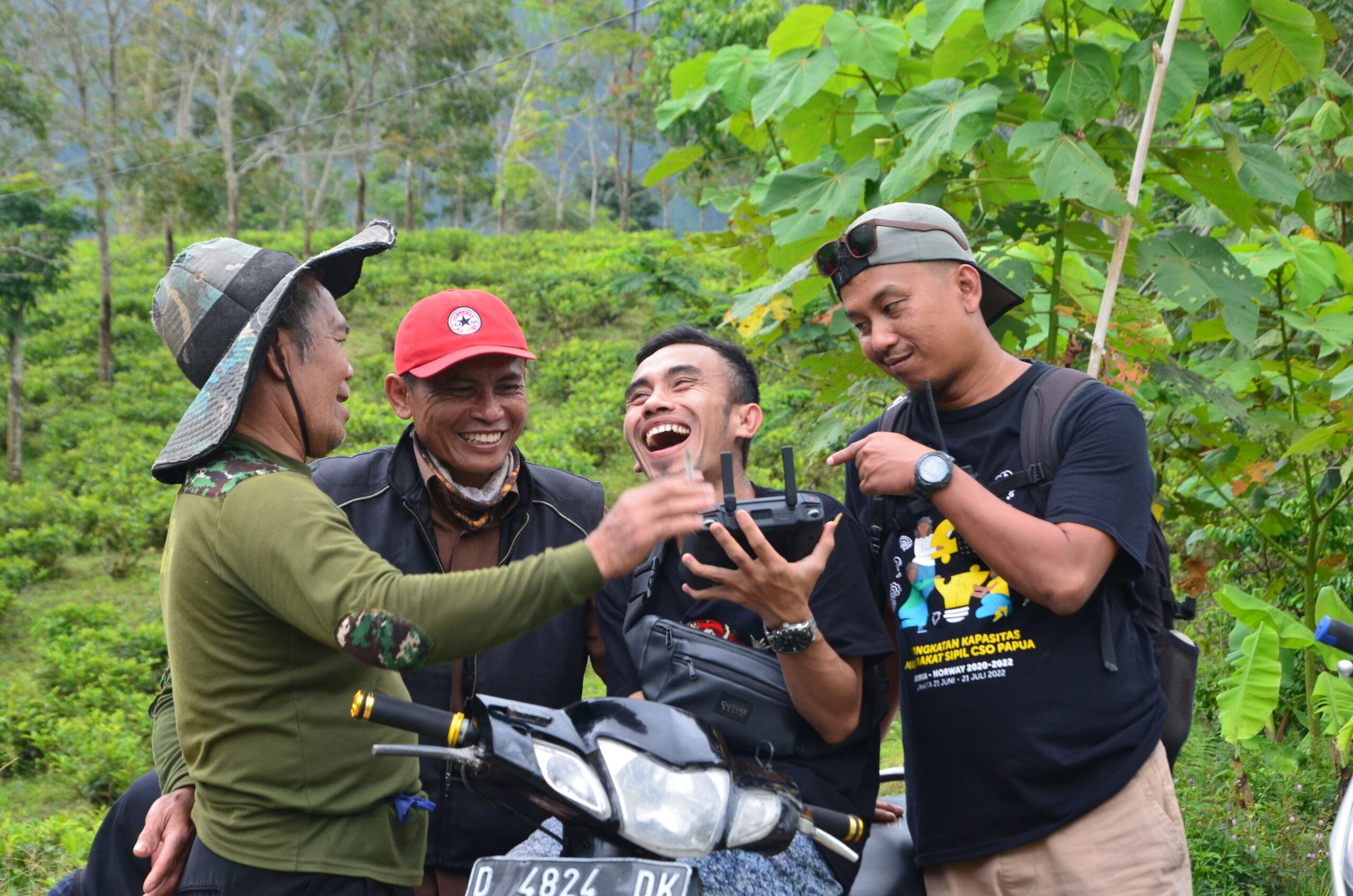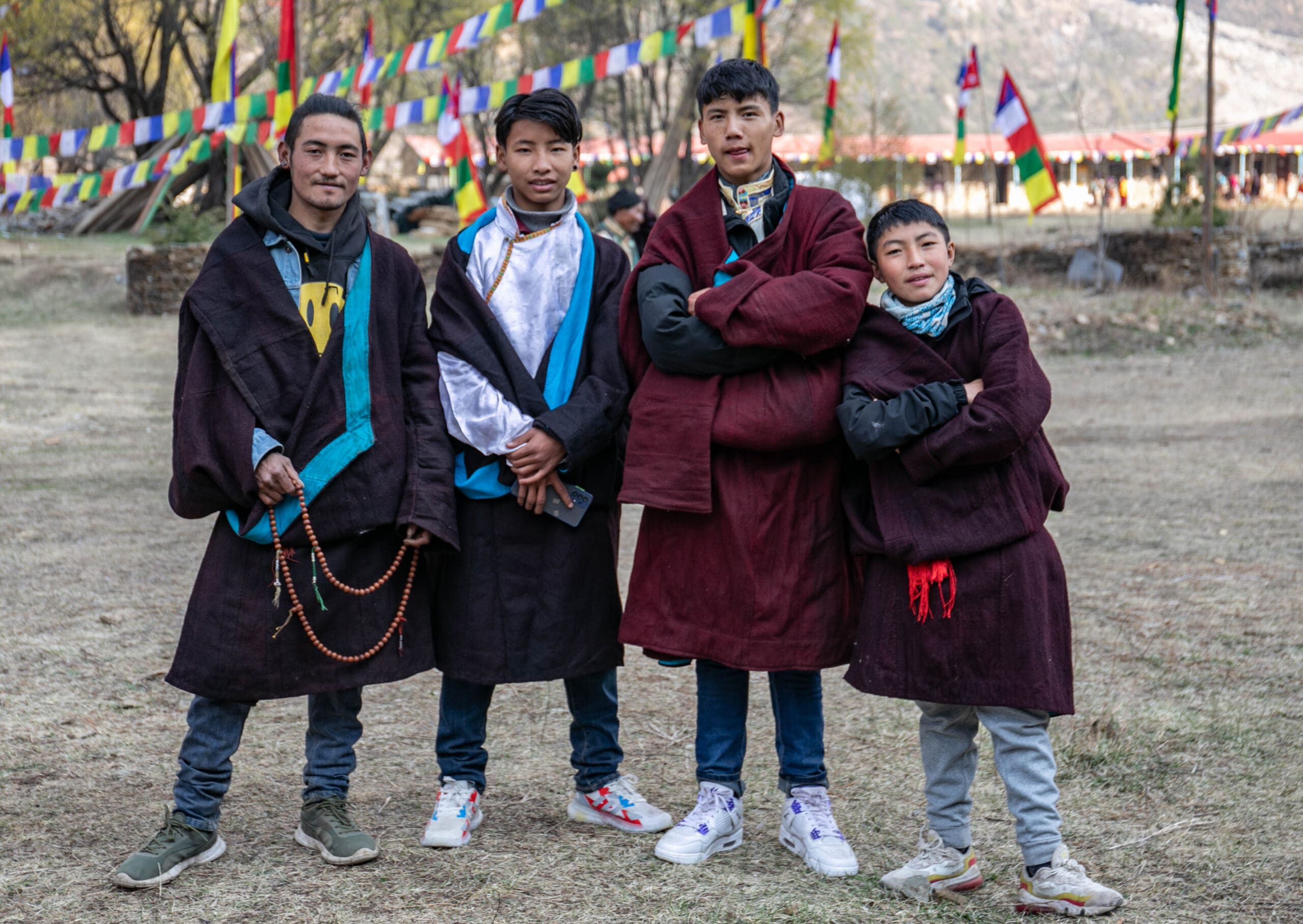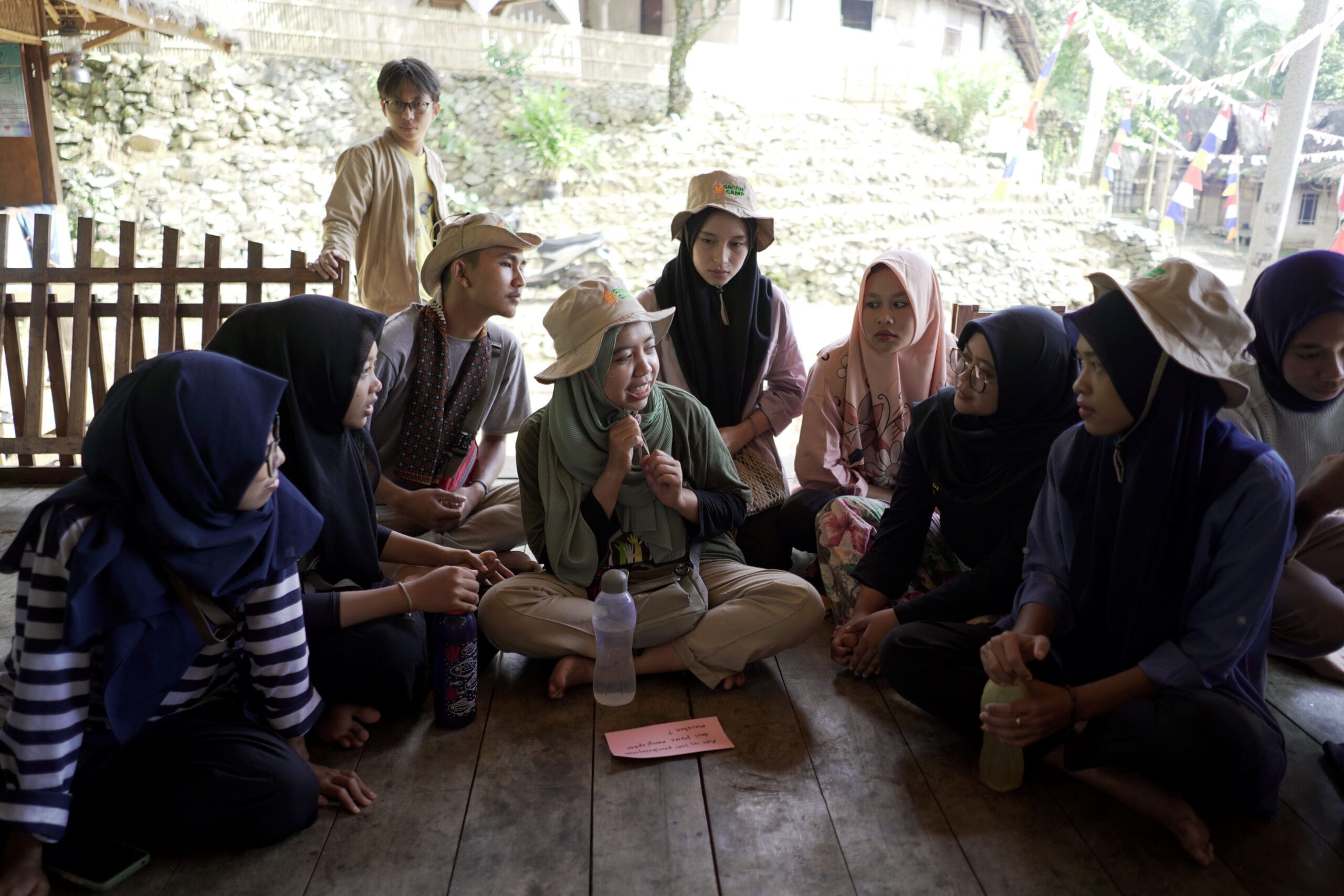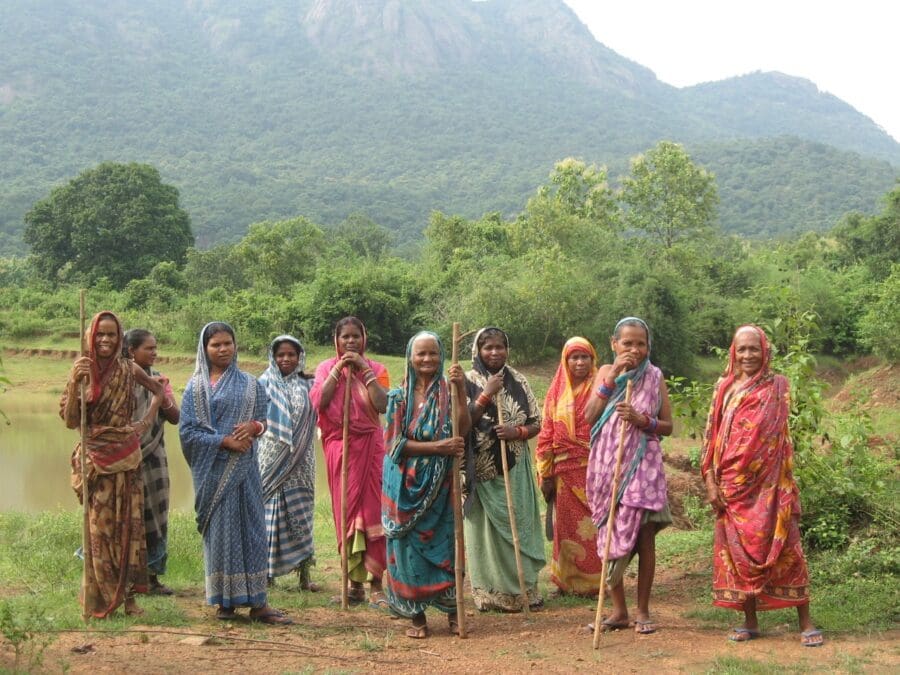Across Asia, Indigenous and community youth are showing up powerfully and intentionally in social, political, and environmental movements to defend their communities’ hard-won rights against intensifying threats. This new report (also available in Bahasa Indonesia) brings together the experiences of youth activists from across the continent who have responded to this call. It underscores the various forms of leadership they are involved in as strategists, innovators, creatives, and mobilizers, as well as the many layers of challenges they face to win respect and recognition as the next generation of leaders.
Here is a snapshot of what Indigenous and local community youth have learned so far and what they want to see more of in 2024 and beyond.
Nurturing relationships with the land
Indigenous and local community youth are often self-motivated to defend their land and territorial rights as part of a lifelong journey to understand their place in the world. Youth are active across scales—from local community organizing to global platforms—and employ a variety of strategies to drive change within and across movements and spaces.
“Making people aware of their rights is very hard; we first need to understand who we are,” said one youth organizer from India.
Intergenerational collective governance of land, territory, and natural resources is crucial to the futures that youth in Asia are seeking to protect. As this report shows, their commitment to their communities extends to the territories that form the basis of their culture, livelihoods, and cosmologies.
“We have a collective dream. We want to speak our own languages, dance our dances, wear our clothes, and feed ourselves from our land,” said Jhontoni Tarihoran (AMAN), a Tano Batak youth organizer and the former national chair of the Indigenous Youth Front of the Archipelago in Indonesia (BPAN). “If we lose our territories, we will lose all of this.”
Yet, the homelands that they steward are often sought as commodities by economic and political actors in pursuit of profit and power. Indigenous Peoples and local communities who also govern their commons collectively are often sidelined by legal, political, and economic systems that protect those in power, rather than those fighting for their collective rights and self-determination. This leads to immense struggle.
By building a strong bond with Indigenous territory and ancestral domain, youth understand that it is through land that they can survive in the long term.

Finding healing and dignity in culture and intergenerational knowledge
Today, Indigenous youth across Asia are studying their mother tongues through traditional songs and literature. They are documenting cultural practices, foods, and expressions, sharing them online through smartphone-produced short films. Treks with elders introduce them to the medicines, forest foods, and practices of ecological care for their territory.
“For Indigenous youth, our elders are our window into self-knowledge as well as knowledge about the world,” said Archana Soreng, a youth climate leader from the Kharia Tribe in Odisha, India.
It’s no surprise that youth in India, the Philippines, and Bangladesh are setting up after-school groups, schools-without-walls, tutoring centers, and other forms of education for community members. These schools often use local pedagogies—or pedagogies produced by youth for youth—as they realize they can take inspiration from their lands.
Lakshmi, a Paniya youth leader from South India, is one such community mobilizer who was first engaged as a tutor in her village five years ago. Now 25 years old, Lakshmi travels from village to village to speak at assemblies, working with communities to document their land rights and file claims.
During our International Youth Day 2023 celebration, Lakshmi shared her journey. “When we go to the villages, we look around and ask ourselves ‘what has happened to this community and people? Why can’t they access government services? What do they not know?’” said Lakshmi. “Many people come and go, but only some actually do the work and stay. I am one of them.” Lakshmi’s Indigenous community is one of the most marginalized in the region and has been exploited as landless daily laborers for generations.

Five principles for change
Indigenous and local community youth in Asia, and around the world more broadly, often straddle what seem like impossible compromises. They navigate the delicate balance between forces of “modernization” and their intergenerational connection to community. Financial security, supporting family members, and staying connected to home no matter where life takes them are their primary concerns.
In the report, they propose five key principles for building Indigenous and local community youth leadership:
- Youth organizing is always intergenerational: Indigenous and communitarian worldviews teach that the relationship between elders, youth, and their landscapes is sacred. Elders and youth alike should build their capacities for effective intergenerational governance.
- Leaders create more leaders: Effective youth leaders see leadership development as ongoing and adaptive. They use a variety of tactics to engage youth, including creative and cultural organizing. Mentors and elders play a crucial role in developing the leadership of new leaders and convening learning opportunities for them.
- Youth learn by leading and allies lead by trusting them: Youth leadership grows when youth have space and support to follow their passion or inspiration and contribute to their communities. It is imperative that youth work be led by and for youth because when youth are supported in their leadership across scales and issues, system-wide change can occur.
- Youth safety is a shared duty: Indigenous Peoples and local communities experience degrees of discrimination, exploitation, and violence, which is passed on to youth through intergenerational trauma. For this reason, youth safety is a crucial principle for any initiative organizing Indigenous or local community youth.
- Solidarity is sacred: Indigenous and local community youth are keen to connect with youth of differing backgrounds to build collective power. This can look like urban–rural exchange, global North–South alliances, and Indigenous–non-Indigenous solidarity. Moments of connection can produce friendships and collaborations that have ripple effects for years to come, and this report is just one such example.
Young people understand the stakes often because they have experienced them. They understand that their issues are interconnected and deep-rooted because they have fought to untangle and address them. Their fights connect them to their communities, lands, and to one another. But most importantly, they are ready to consolidate the commitment and wisdom it would take to win together.







